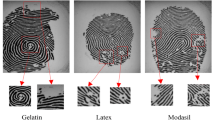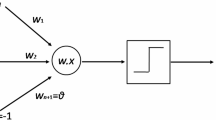Abstract
Fingerprint recognition technology is widely employed for identity verification and access control across diverse domains in which the quality of fingerprint images is critical for accurate biometric identification. However, fingerprint images can be damaged or incomplete due to various factors such as sensor limitations, environmental conditions, or physical injuries. To address this, several approaches including attention mechanism based autoencoders, multi-kernel sequential and multi-kernel stacked autoencoders, and multi-kernel ensemble autoencoders are proposed to perform reconstruction of incomplete and damaged fingerprints. Attention mechanisms play a crucial role by selectively emphasizing important regions and details, further enhancing information capture. By utilizing different autoencoder models with varying kernel sizes, local details and global context can be effectively captured, resulting in more precise restoration. The adoption of multi-kernel sequential and multi-kernel stacked autoencoders enables the extraction of increasingly abstract features, enhancing the model’s ability to capture complex fingerprint characteristics. Utilizing autoencoder-based methods for the reconstruction of damaged or incomplete fingerprint images can enhance the accuracy and reliability of fingerprint identification systems leading to improved security and efficiency in real-world applications. Evaluation is conducted using image quality assessment metrics and feature-based matching is utilized to compute fingerprint matching accuracy. The multi-kernel ensemble autoencoder model produces the best reconstruction output with an average fingerprint matching accuracy of 93.81 %. The findings highlight the effectiveness of the proposed work in achieving high-quality reconstruction output and accurate fingerprint matching. The proposed work can be applied in various domains that include law enforcement, security, forensic analysis, and biometric authentication.
Graphical abstract








Similar content being viewed by others
Explore related subjects
Discover the latest articles, news and stories from top researchers in related subjects.Data Availability
The Sokoto Coventry Fingerprint Dataset (SOCOFing) is freely available for noncommercial research purposes at https://www.kaggle.com/ruizgara/socofing
References
Yusuf N, Marafa KA, Shehu KL et al (2020) A survey of biometric approaches of authentication. Int J Adv Comput Res 10(47):96–104
Dargan S, Kumar M (2020) A comprehensive survey on the biometric recognition systems based on physiological and behavioral modalities. Expert Syst Appl 143:113114
Sarfraz N (2019) Adermatoglyphia: barriers to biometric identification and the need for a standardized alternative. Cureus 11(2)
Kumari V, Thakar MK, Mondal B et al (2021) Effects of oils, lotions, hand sanitizers, and mehendi on fingerprints captured through digital fingerprint scanner. Egypt J Forensic Sci 11(1):8
Alsmirat MA, Al-Alem F, Al-Ayyoub M et al (2019) Impact of digital fingerprint image quality on the fingerprint recognition accuracy. Multimed Tools Appl 78(3):3649–3688
Asamoah D, Ofori E, Opoku S et al (2018) Measuring the performance of image contrast enhancement technique. Int J Comput Appl 181(22):6–13
Anandha Jothi R, Nithyapriya J, Palanisamy V et al (2020) Evaluation of fingerprint minutiae on ridge structure using gabor and closed hull filters. In: New Trends in computational vision and bio-inspired computing: selected works presented at the ICCVBIC 2018, Coimbatore, India pp 663–673
Bian W, Xu D, Li Q et al (2019) A survey of the methods on fingerprint orientation field estimation. IEEE Access 7:32644–32663
Le NT, Wang JW, Le DH et al (2020) Fingerprint enhancement based on tensor of wavelet subbands for classification. IEEE Access 8:6602–6615
Lee S, Jang SW, Kim D et al (2021) A novel fingerprint recovery scheme using deep neural network-based learning. Multimed Tools Appl 80:34121–34135
Bank D, Koenigstein N, Giryes R (2023) Autoencoders. Machine learning for data science handbook: data mining and knowledge discovery handbook, pp 353–374
Li P, Pei Y, Li J (2023) A comprehensive survey on design and application of autoencoder in deep learning. Appl Soft Comput 138:110176
Berahmand K, Daneshfar F, Salehi ES et al (2024) Autoencoders and their applications in machine learning: a survey. Artif Intell Rev 57(2):28
Solovyeva E, Abdullah A (2022) Dual autoencoder network with separable convolutional layers for denoising and deblurring images. J Imaging 8(9):250
Kolivand H, Hamid AABA, Asadianfam S et al (2022) A functional enhancement on scarred fingerprint using sigmoid filtering. Neural Comput Appl 34(22):19973–19994
Zhang Z, Liu S, Liu M (2021) A multi-task fully deep convolutional neural network for contactless fingerprint minutiae extraction. Pattern Recognit 120:108189
Gupta R, Khari M, Gupta D et al (2020) Fingerprint image enhancement and reconstruction using the orientation and phase reconstruction. Inf Sci 530:201–218
Cui Z, Feng J, Li S et al (2018) 2-d phase demodulation for deformable fingerprint registration. IEEE Trans Inf Forensic Secur 13(12):3153–3165
Bae J, Choi HS, Kim S et al (2020) Fingerprint image denoising and inpainting using convolutional neural network. J Korean Soc Ind Appl Math 24(4):363–374
Qi Y, Qiu M, Jiang H et al (2022) Extracting fingerprint features using autoencoder networks for gender classification. Appl Sci 12(19):10152
Pool W (2021) Use of autoencoders for fingerprint encoding and comparison. Master’s thesis, University of Twente
Liu M, Qian P (2020) Automatic segmentation and enhancement of latent fingerprints using deep nested unets. IEEE Trans Inf Forensic Sec 16:1709–1719
Mansar Y (2018) Deep end-to-end fingerprint denoising and inpainting. arXiv:1807.11888
Adiga V S, Sivaswamy J (2019) Fpd-m-net: Fingerprint image denoising and inpainting using m-net based convolutional neural networks. In: Inpainting and denoising challenges, Springer, pp 51–61
Yan Q, Niu A, Wang C et al (2024) Kgsr: A kernel guided network for real-world blind super-resolution. Pattern Recognit 147:110095
Kingma DP, Ba J (2014) Adam: A method for stochastic optimization
Sara U, Akter M, Uddin MS (2019) Image quality assessment through fsim, ssim, mse and psnr-a comparative study. J Comput Commun 7(3):8–18
Setiawan AW (2020) Image segmentation metrics in skin lesion: accuracy, sensitivity, specificity, dice coefficient, jaccard index, and matthews correlation coefficient. In: 2020 International conference on computer engineering, network, and intelligent multimedia (CENIM), IEEE, pp 97–102
Dubey SR, Singh SK, Chaudhuri BB (2022) Activation functions in deep learning: a comprehensive survey and benchmark. Neurocomputing 503:92–108
Gao S, Li ZY, Han Q et al (2022) Rf-next: efficient receptive field search for convolutional neural networks. IEEE Trans Pattern Anal Mach Intell 45(3):2984–3002
Sammut C, Webb GI (2011) Encyclopedia of machine learning. Springer Science & Business Media
Aglave P, Kolkure VS (2015) Implementation of high performance feature extraction method using oriented fast and rotated brief algorithm. Int J Res Eng Technol 4:394–397
Martins N, Silva JS, Bernardino A (2024) Fingerprint recognition in forensic scenarios. Sensors 24(2):664
Shehu YI, Ruiz-Garcia A, Palade V, et al (2018) Sokoto coventry fingerprint dataset, pp 1161–1165
Funding
No funding was received to assist with the preparation of this manuscript.
Author information
Authors and Affiliations
Contributions
Conceptualization: J Dhalia Sweetlin, R Bhuvaneshwari, N Bhagya, N Bavya Dharshini; Methodology: J Dhalia Sweetlin, R Bhuvaneshwari, N Bhagya, N Bavya Dharshini; Formal analysis and investigation: J Dhalia Sweetlin, R Bhuvaneshwari, N Bhagya, N Bavya Dharshini; Writing - original draft preparation: J Dhalia Sweetlin, R Bhuvaneshwari, N Bhagya, N Bavya Dharshini; Writing - review and editing: J Dhalia Sweetlin, R Bhuvaneshwari, N Bhagya, N Bavya Dharshini.
Corresponding author
Ethics declarations
Competing of Interest
The authors have no competing interests to declare that are relevant to the content of this article.
Additional information
Publisher's Note
Springer Nature remains neutral with regard to jurisdictional claims in published maps and institutional affiliations.
Rights and permissions
Springer Nature or its licensor (e.g. a society or other partner) holds exclusive rights to this article under a publishing agreement with the author(s) or other rightsholder(s); author self-archiving of the accepted manuscript version of this article is solely governed by the terms of such publishing agreement and applicable law.
About this article
Cite this article
J, D.S., R, B., N, B. et al. Robust fingerprint reconstruction using attention mechanism based autoencoders and multi-kernel autoencoders. Appl Intell 54, 8262–8277 (2024). https://doi.org/10.1007/s10489-024-05622-8
Accepted:
Published:
Issue Date:
DOI: https://doi.org/10.1007/s10489-024-05622-8




